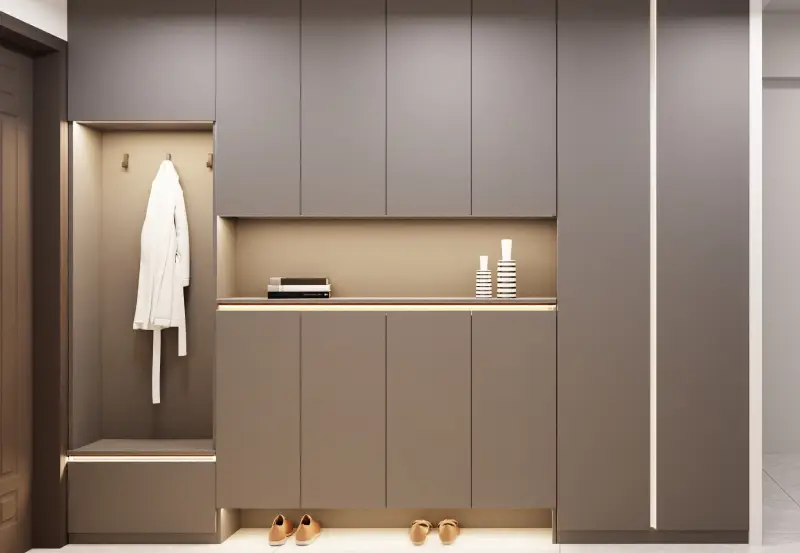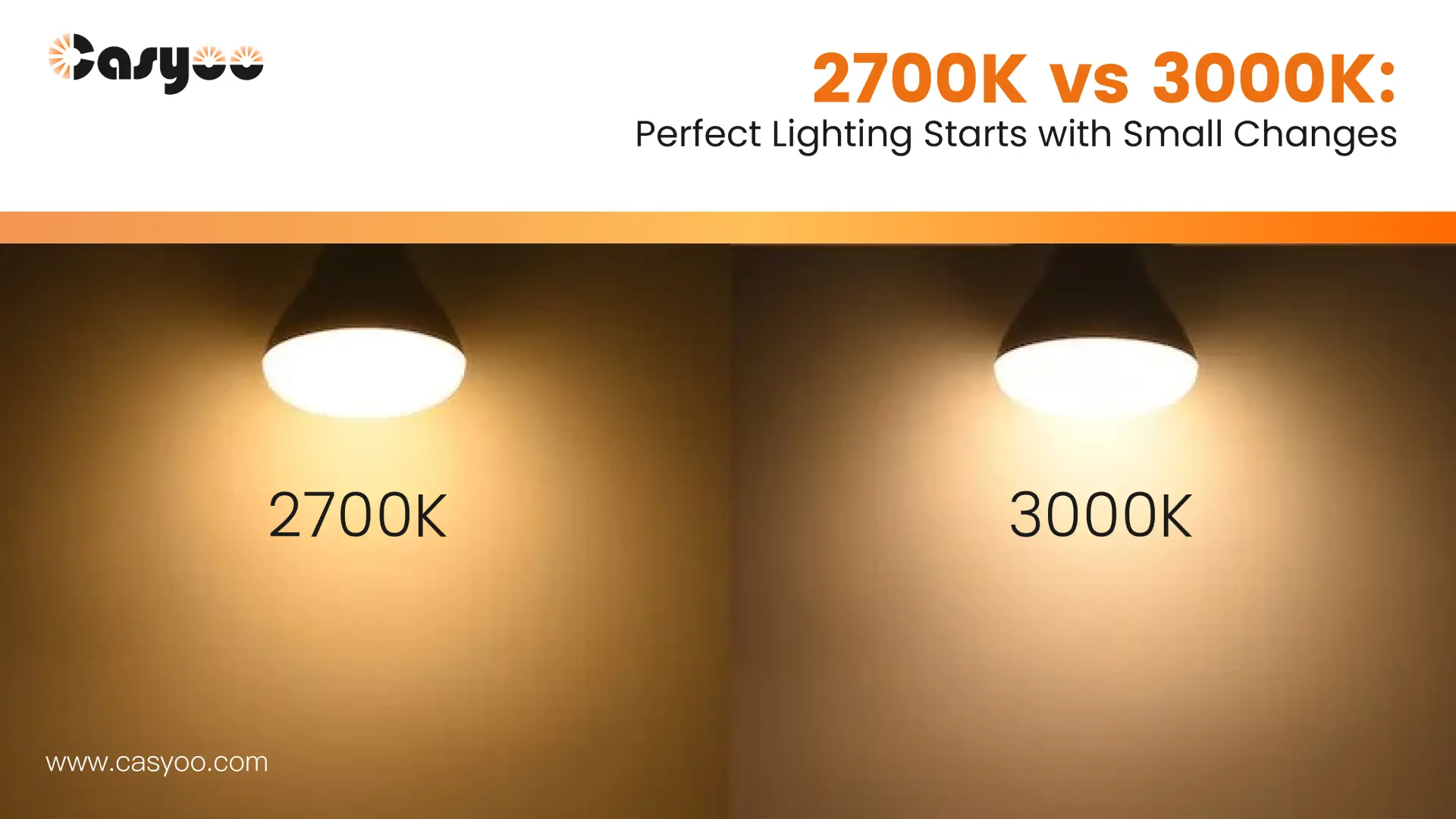Imagine being able to unwind in a softly lit living room or work in a bright and well-lit kitchen—the correct light, at the right moment. Sometimes the distinction is in the minor variations of color temperature. Two popular options, 2700K and 3000K, might seem comparable, but they can have very different effects on the look and feel of a room. This article is going to explain where each is most appropriate and how to choose the best for your use case. Keep reading!
How Color Temperature Works in Lighting
What is Color Temperature?
The color of the light is described by its color temperature, which is expressed in Kelvin (K). A value like 2700K will make for a cozy, yellow glow that one would expect to achieve by candlelight or even classic incandescent bulbs. On the other hand, 3000K would be more towards a neutral white with a much cleaner and slightly cooler look. These subtle changes alter not just the feel but the perception of areas as well.
Color Temperature Emotional and Functional Effects
2700K lighting is warm and cozy, and therefore the best ambience creator in the bedrooms, dining rooms, and living rooms where rest is key. Its yellowish hue imitates the color of the setting sun or a big fire; thus, it brings in warmth and tranquility.
3000K lighting, on the other hand, balances coziness with functionality. It is a neutral white light, bright enough for tasks yet still easy on the eyes. This clarity is especially beneficial in kitchens, baths, and home offices, where precision and comfort are important. Consider it as the ideal combination of practical brightness and cozy ambience.
Where to Use 2700K and 3000K?
Residential Spaces
Lighting in the home serves many purposes: ambiance, decoration, and functionality. Here’s how 2700K and 3000K excel in different rooms:
- 2700K: This warm shade looks wonderful in bedrooms, living spaces, and dining areas. It pairs well with earthy tones, wooden furniture, and soft textiles to create a tranquil and inviting room ideal for relaxation.After a long day, there is nothing like the comforting glow of 2700K light.
- 3000K: Kitchen, bathroom, and home office require brighter lighting. The clean, natural tone of 3000K light illuminates surface and detail, making cooking, grooming, or working easier. In a white kitchen, for example, 3000K lighting counteracts yellowish overtones so cabinetry looks crisp and modern.
Commercial Spaces
Lighting in commercial environments is about increasing customer experience and efficiency, not just aesthetics. Here’s how these color temperatures match:
- 2700K: This would be perfect for boutique stores, restaurants, and hospitality environments where the creation of a cozy, luxurious ambiance is important. A warm glow will keep diners lingering and shop-goers feeling at ease, subtly elevating their experience.
- 3000K: Retail stores and offices can take advantage of the clarity and accuracy that 3000K brings to lighting without it being harsh on the eyes. It shows products in their truest colors, increasing visual interest and customer confidence.
Outdoor and Landscape Lighting
- 2700K: Perfect for gardens, patios, and outdoor dining. Its yellowish, warm tone will blend with the natural environment, creating a very intimate and magical atmosphere. Just imagine a soft glow over your flower beds or a cascade of light through the trees during an evening gathering.
- 3000K: Suitable for pathways, driveways, and modern architectural facades, it offers more visibility with a slightly cooler tone, increased safety, and a display of the design elements. For example, the lighting of a walkway with 3000K, apart from ensuring easy navigation, gives a modern touch.
Health and Blue Light Considerations
Blue Light Content in 2700K and 3000K
The negative health consequences of blue light have gained a lot of attention, particularly as LED technology has advanced. Blue light interferes with melatonin production, messing with our sleep cycles and causing eye strain. That’s where color temperature comes in.
2700K lighting has very little blue light and is thus perfect for rooms where one relaxes, like bedrooms and living rooms. Its calming tones help you relax and get ready for a good night’s sleep by promoting circadian rhythms.
In contrast, 3000K lighting has slightly more blue light, although it is still well within acceptable bounds for everyday use. It works well in areas like kitchens and home offices during the day where concentration and productivity are needed. It is not as relaxing as 2700K, but its blue light is still much less than in cooler colors like 4000K or 5000K, which are usually associated with daylight-mimicking LEDs.
Practical Suggestions
Use 2700K lighting in areas where you wish to promote relaxation and comfort, particularly in the evenings. It is used to great effect in bedrooms, reading nooks, and living rooms for its calming qualities.
Choose 3000K lighting in locations where clarity and visibility are important. This would be ideal for locations that are frequently used for tasks during the day, such as bathrooms, kitchens, and workshops.
Blended Lighting Solutions for Optimal Results
The Case for Mixed Color Temperatures
When you can have both, why pick one over the other? Adding dimension and adaptability to a place by layering 2700K and 3000K lighting can create distinct ambiances for different tasks and moods. For example:
- To create a comfortable basis, use 2700K lighting for ambient illumination, such as floor lights or ceiling fixtures.
- For task-oriented spaces where brightness and clarity are required, such as under-cabinet lighting, add 3000K illumination.

Dynamic Lighting Systems
Smart lighting systems take blended solutions a step further. Modern LED products now offer adjustable color temperatures, so you can easily switch between 2700K and 3000K—or even cooler tones—at the touch of a button. This type of adaptability is very useful in multipurpose areas like open-plan living rooms or business spaces.
For example, when having a dinner party, you can have 3000K lighting, but for a family movie night, you can have warm 2700K lighting. Similar to this, an office may have 3000K lighting during the day and switch to 2700K for events or leisure spaces at night.
2700k vs 3000k: How to Decide?
- Room Size and Orientation: Small rooms with reduced natural light can make the most of 3000K’s extra brightness, while bigger, sun-filled rooms can easily work with 2700K.
- Wall Colors and Materials: Warm tones in walls and furniture go well with 2700K, but cool tones such as gray, blue, or white shine under 3000K.
- Purpose of the Space: Match the lighting to the room’s purpose—relaxation zones favor 2700K, while task-oriented areas thrive under 3000K.
Making the Final Choice
Still uncertain whether 2700K or 3000K is the right fit for your space? Here is a fast guide: pick 2700K to get that warm, relaxing glow for bedrooms and living rooms. Need brighter, functional light for kitchens, bathrooms, or offices? Go with 3000K. Can’t decide? Why not combine the two to create a tiered lighting system suitable for any mood or activity?
Are you ready to find the greatest fit for your application? Contact us today or visit our LED Product page for personalized lighting that seamlessly integrates atmosphere and function—whether you’re constructing a comfortable home or a beautiful commercial space, we can help you bring your idea to life.




